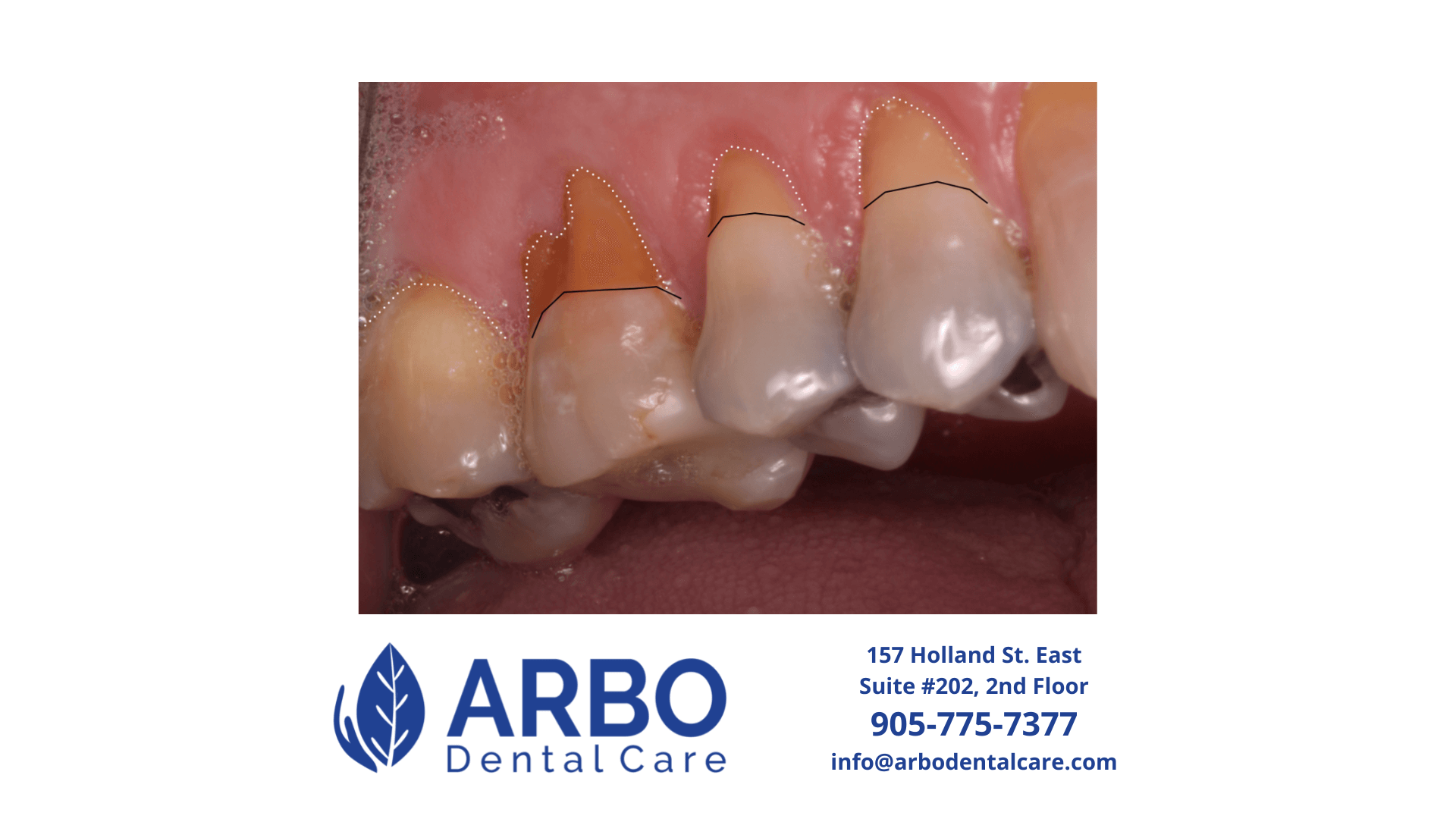Back
Gum Recession
Most people think gum recession would hurt, however most of the time it goes unnoticed!

Take a look at the above photo, the black line above indicates where the gums should be and the white dotted line indicates where the gumline is now.
Signs to look out for to see if you have gum recession:
- 1. Tooth looks longer than the other teeth nearby.
- 2. The tooth near the gumline appears more yellow (this is the natural colour of the exposed root)
- 3. Sensitivity to cold, sweets, acidic foods
- 4. Food constantly accumulates near the gumline of teeth
- 5. The gumline of multiple teeth look uneven
What’s the issue with gum recession? It doesn’t hurt! Only when the tooth root is exposed would there be any sort of discomfort, but as the gums recede there is no pain at all.
When the gum recedes around teeth a few things can happen:
- 1. Higher risk of sensitivity and cavities of exposed tooth root (it’s ‘softer’ than enamel)
- 2. Higher risk of bone loss and loose teeth – as the gums recede so does the bone around it
- 3. Higher risk of gums receding further
To avoid gum recession, here are a few things you can do now:
- 1. Switch to electric brush with soft bristles and brush over teeth gently, or use three fingers to hold the brush instead of the whole hand
- 2. Using an electric brush or brushing in a circular motion and brush away from the gumline, and not into the gumline
- 3. Get regular dental check ups because your dentist and hygienist can do a thorough exam at each visit and give recommendations specific for you
If you think you already have gum recession then it’s time for you to visit a dentist for proper diagnosis and treatment planning. Dr. Pham and Guadalupe at Arbo Dental Care in Bradford can help you determine if you’re at risk of gum recession or what can be done if there is existing gum recession.
Next post we’ll discuss gum recession treatment options.
Dr. David Pham and Arbo Dental Care Team